The Apple iPhone XR Review: A Different Display Leads To Brilliant Battery Life
by Andrei Frumusanu on February 5, 2019 9:45 AM EST- Posted in
- Mobile
- Apple
- Smartphones
- iPhone XR
Display Measurement
The display of the iPhone XR is likely its most discussed hardware feature, simply because Apple chose to diverge from the OLED screens on the XS models and instead use a more traditional LCD screen. While that in itself shouldn’t have caused too much talk, Apple also made the interesting choice to go with a relatively low-resolution 1792 x 828 panel. This represents a lower pixel density than what we would expect out of a sizable 6.1” (diagonal) display.
The following pictures are some close-up shots of the iPhone XR next to the iPhone XS – unaltered at the full resolution of my DLSR. The pictures are best compared when you open up the full resolution images.
Cropping 1:1 areas with the same icons on both phones, we have almost the same feature sizes so it allows for a good direct comparison.
When you have both phones side-by-side, it very quickly becomes evident that the iPhone XR isn’t able to compete with the sharpness of the XS models. While the LCD panel does allows for better defined right-angle edges, its definition on anything else is clearly lower than that of the iPhone XS. The most evident difference of this is on text such as the clock icon’s numbers (the icon labels aren’t a good comparison because of different font sizes); here the XS panel is just very much ahead in practical spatial resolution.
In every-day use-cases where you would browse your phone at an arm-length away, these differences are hard to notice, and it should not cause any issues for the majority of users. Though if you do like to hold your phone close to your face – as I like to do late at night in bed – then you might find it hard to get used to the less defined and blurrier text of the iPhone XR. I think the main issue I have with the iPhone XR’s display is that it’s actually somewhat of a downgrade from the iPhone 8 Plus in terms of resolution – while I understand that Apple wanted to use a more affordable panel, I do think it would have prudent to at least match the 401ppi pixel density of an iPhone 8 Plus.
While the resolution of the iPhone XR screen is a debatable topic and is something that should be decided by users by experiencing it themselves, the other aspects of the LCD panel are things that Apple definitely got right: The screen offers absolutely excellent viewing angles, even when viewed from off-axis. This is a simple characteristic that many vendors often get wrong when choosing an LCD display panel, yet Apple always manages to be on-point in this regard.
We move on to the display calibration and fundamental display measurements of the XR screen. As always, we thank X-Rite and SpecraCal, as our measurements are performed with an X-Rite i1Pro 2 spectrophotometer, with the exception of black levels which are measured with an i1Display Pro colorimeter. Data is collected and examined using SpectraCal's CalMAN software.
At our standard 200 nits measurement point, the iPhone XR is absolutely spot-on in terms of greyscale accuracy, even though it’s just ever so slightly above a D65 white target. The colour temperature seems to vary with brightness, as at peak brightness the phone goes down to a 6500K average CCT. It’s to be noted at these levels the display has weak greens – I personally can’t perceive this just looking at the phone, but holding it side-by-side next to the XS makes it more apparent. Nevertheless, it’s not an issue in my view.
Peak brightness goes up to 694 nits on my unit – about 40 nits higher than what I’ve been able to measure on the XS and XS Max. The greyscale calibration here only seems to slightly miss one aspect: the gamma is just a bit too high, with an average of 2.28, and this seems to be skewed at higher brightness levels, where it can have a gamma of up to 2.4. We can see this in the greyscale comparison image, as we see some of the tones being slightly darker than the reference target.
Apple has full support for colour management and the display as well as the OS is able to concurrently display sRGB content alongside wider gamut Display P3 D65 images. Saturation level accuracy in both gamuts is fantastic, coming in at DeltaE2000 of 1.24 and 1.17 for sRGB and P3 targets respectively. While the results are not quite as industry-leading as on the XS, they are both great results and you’d be very hard to perceive the differences.
The Gretag MacBeth collection of commonly found color tones again showcases some good results, with a dE2000 of 1.47. The comparison image only shows a slight difference in the luminance of the tones, something that can be attributed to the higher gamma of the screen.
Overall, the iPhone XR display is a very high quality screen when it comes to its fundamentals such as brightness, contrast (for an LCD) as well as excellent viewing angles. Apple’s colour calibration, while not quite matching that of its XS siblings, is still beyond what we usually find in other smartphones and should represent absolutely no issue. And the slightly higher gamma should not be something that it perceivable in every-day use-cases.
The resolution of the screen is actually my only real gripe about the display, and I do think that Apple was a bit too conservative in this regard. I use my phones a lot at night in bed where I have the screen closer to me – and this is one case where I would prefer a higher resolution. Again this is a subjective view on the topic and you’d best evaluate it yourself in person – but even though all other aspects of the XR’s screen are excellent, it does feel like a compromise for the phone.


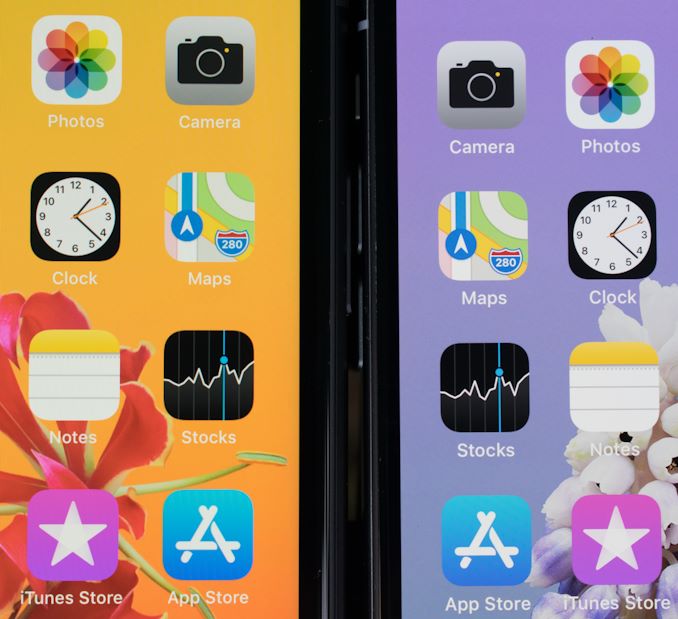
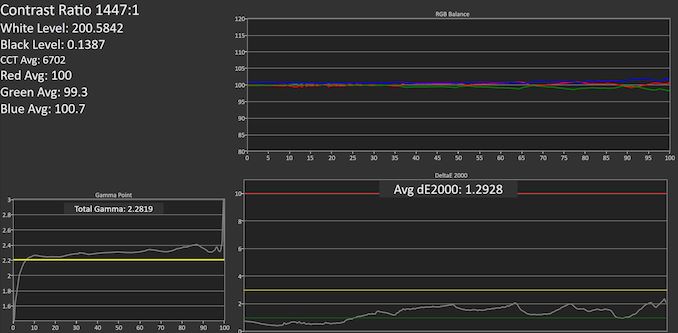

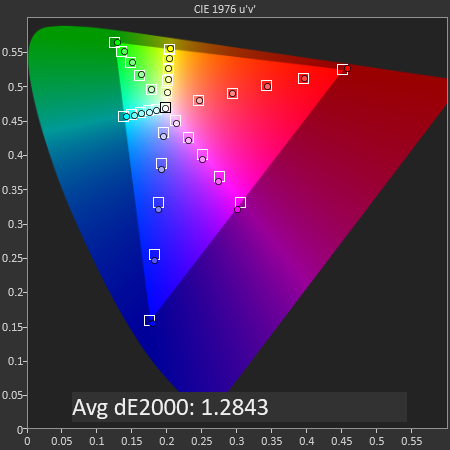
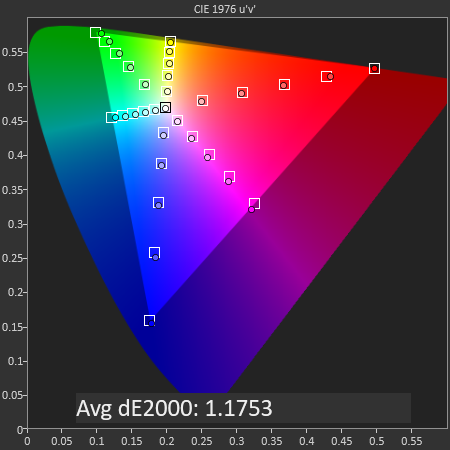
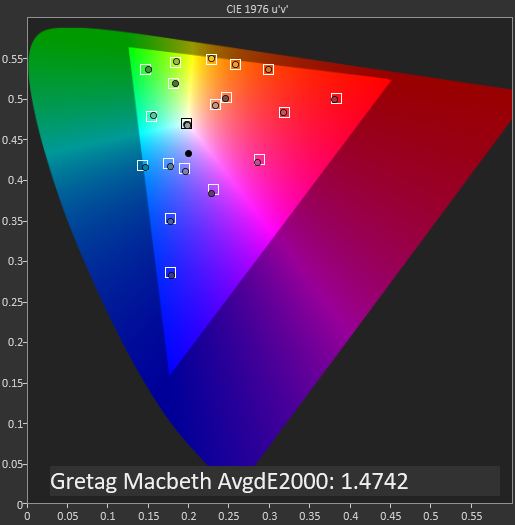









89 Comments
View All Comments
GreenReaper - Tuesday, February 5, 2019 - link
I don't think that's the case. LCD is more efficient than OLED unless you're looking at a largely-black screen. There have been reviews looking specifically at power usage and they show a significant increase for OLED screens.FreckledTrout - Wednesday, February 6, 2019 - link
Its both the resolution and the use of LCD since LCD has lower standby draw.beggerking@yahoo.com - Wednesday, February 6, 2019 - link
don't think thats true.... OLED only light up pixels that needs to be lite up.. while LCD requires the whole backlight to be lite up... unless you really dim the LCD, OLED typically is more efficient.beggerking@yahoo.com - Wednesday, February 6, 2019 - link
Proof OLED is more effecient than LCD ... from macworldhttps://www.macworld.com/article/3223143/displays/...
cha0z_ - Monday, February 11, 2019 - link
Wrong, even the current gen LCDs are draining more power than a OLED current gen screen. The only exclusion would be a maxed out brightness, but most people don't use the phone in max brightness most of the time. Then again, I don't know what the power consumption of the XS OLED is (can't recall the Andrei tests, you can check them out in the review).The lower screen resolution is the reason for the long battery life, not only because the UI is using a lot less GPU to draw, but this goes to every app too - like youtube, that will run most videos at 720p while my note 9 will run them at 1440p if available. The workload for 720p and 1440p is a lot different and leads to different battery usage.Then we have games... for xs they will be it's native resolution in a lot of cases, but for the xr they will be 720p. And so on and so on... the resolution is playing a lot bigger role than: "oh, the UI is using so low on the CPU/GPU that the resolution doesn't matter." yeah, for the UI itself the difference would not be that great, but on the most consumed apps like videos/games/modern web pages - it will.
Wardrive86 - Tuesday, February 5, 2019 - link
I always look forward to your in depth reviews and architecture deep dives Andrei. I love your sustained performance tests..something only found at Anandtech currently. I honestly think you are the best writer Anandtech or any other tech site has had period...with that out of the way, I have one question and a potential request. Spec2006 shows the A12 having substantially better efficiency than it's competitors, finishing the finite tests faster with less total energy used by virtue of higher performance, but having higher average power draw. How would this correlate to an infinite test such as a high end 3d game like Shadowgun Legends or Asphalt 9? Would the higher average power draw remain at the same performance level of say a Snapdragon 835/845/Kirin 980? Also a request if you ever have time with your busy schedule, Could we get a sequel article to your 2015 article "The Mobile CPU core count debate" with more modern games and apps, comparisons of OpenGLES vs Vulkan on CPUs, etc.. I know I don't ask for much!Andrei Frumusanu - Wednesday, February 6, 2019 - link
> How would this correlate to an infinite test such as a high end 3d game like Shadowgun Legends or Asphalt 9?For infinite workloads you just use the perf/W metric:
https://www.anandtech.com/show/13392/the-iphone-xs...
https://www.anandtech.com/show/13503/the-mate-20-m...
Consequently if you're fps capped you can use Joules/frame but that's not a popular metric.
> Could we get a sequel article to your 2015 article "The Mobile CPU core count debate" with more modern games and apps
At some point.
zodiacfml - Wednesday, February 6, 2019 - link
Performance reminds me of my AMD Vega 56 on reasonably low graphic settings at 4k/UHD resolution, it uses only 60 to 80 watts while gaming. Changing just one or two graphics settings shoots to its default power limit which is 180 watts.Anyways, I hope Apple release an iPod touch this year based from this SoC. It is terribly impressive which is good for gaming.
CHJ - Wednesday, February 6, 2019 - link
I have been using the XR for the last few weeks. My previous phone was the Xperia XZ, and the one before that a 5s.I cannot stress enough how good the battery life is. I used to carry a 10000 mAh power brick around for a full day out just in case - that simply is not the case anymore. I can’t run this thing down below 20% (I do sometimes get close, meaning I probably will run down the XS on some days, especially taking into consideration battery degradation after some months). This has simplified my life quite a bit.
As for the display, I was worried about it, but I honestly do not notice the lower resolution compared to the XZ in day-to-day usage. In fact, all things considered (color accuracy and True Tone), this has a better display imo. The lower resolution certainly helps battery life as well.
The thicker bezels - this I do still notice, but the XR costs 330 USD less than the XS where I live, and a slightly worse display, the lack of a second lens and 3D Touch, and thicker bezels are acceptable compromises given the savings. And that amazing battery life, did I mention that? ;)
All in all, I am very satisfied with my purchase.
CHJ - Wednesday, February 6, 2019 - link
Some other observations:The weight is noticeable, and the width of the phone does not aid in getting a comfortable grip. My fingers cannot wrap over the edge when I need to reach the top half of the screen. If you have large hands, you’ll be better off, I think.
The stereo speakers are also much improved and genuinely useful. I find them to be sufficient for watching YouTube, which is pretty much all I need from phone speakers.